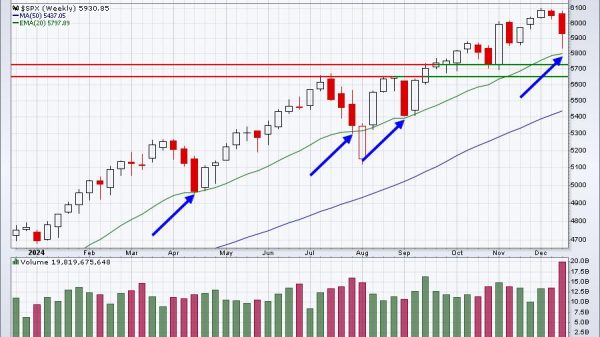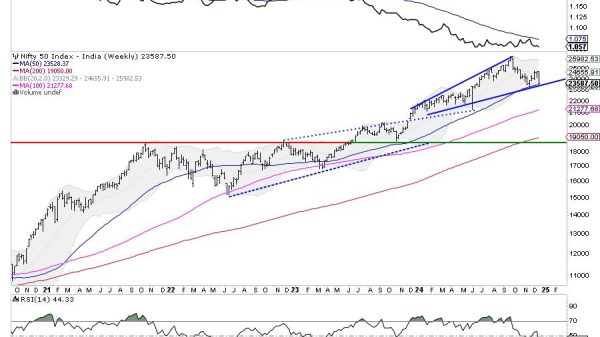David J. Bier
Student visas are the primary jumping‐off point for most high‐skilled immigration to the United States. Immigrants study at America’s elite universities and then find jobs here when they graduate—largely through the post‐graduate employment authorization program called Optional Practical Training. Despite the importance of these visas, the State Department rejected an unprecedented 35 percent of student visa applicants in 2022.
Student visas are known as F‑1 visas. Figure 1 shows the F‑1 student visa denial rate compared to the visa denial rate for all other nonimmigrant (i.e. temporary) visa applicants. As it shows, student visas usually have a similar rejection rate to other nonimmigrant visa applicants. But in 2021 and 2022, student visas have been denied at double the rate of all other applicants. The student visa denial rate has increased from a low of 15 percent in 2014 to 35 percent in 2022.
In 2022, consular officers denied a record 220,676 student visas. As Figure 2 shows, more visas were denied in 2022 than were issued in 2003 and 2004. The staggering number of denials occurred even as the number of issuances remained far below the peak year of 2015. Even 2015 had far fewer denials than 2022. It now appears that the higher denial rates, which shot up in 2016, may have dissuaded some applicants from applying, and the absolute number of total student visa applicants has declined, and visa issuances have declined 36 percent from 2015 to 2022.
It is important to understand that before a student can even apply for a visa they must already be accepted into a government‐approved university. This means that the U.S. Department of State turned down 220,676 students who would have likely paid roughly $30,000 per year or $6.6 billion per year in tuition and living expenses. Over four years, that number rises to $26.4 billion in lost economic benefits to the United States.
The State Department does not separately delineate the reasons for student visa denials but nearly all nonimmigrant visa denials are for failing to prove “nonimmigrant intent” (that is, the desire not to move to the United States permanently). Applicants need to show sufficient ties to their home country that would impel them to return to their home country when their reasons for visiting have ended.
The nonimmigrant intent subjective standard can be enforced in a variety of ways. Consular officers are supposed to only consider someone’s “present intent” not considering how their intention might change if opportunities arise in the United States to stay legally. In practice, there is very little consistency in application.
The unprecedented denials occurred even though the State Department officials in Washington, D.C. attempted to return to a lower standard of evidence for students that existed before Trump. The Foreign Affairs Manual now states that students “should be looked at differently” because “typically, students lack the strong economic and social ties of more established visa applicants, and they plan longer stays in the United States.” It concludes that “the natural circumstances of being a student do not disqualify the applicant.” This change occurred in September 2021 before the start of fiscal year 2022.
The State Department hasn’t disclosed the denial rate by nationality in 2022, but the rise and fall of Chinese students is the most important trend in student visa policy in recent years (Figure 3). Another ground for denial—which is far less frequent but affects mainly students from China—is a Trump presidential proclamation that bars visas for people who studied at any university that works with the Chinese military on any level. This order—which is retroactively applied to students who studied at such universities before the order was issued—was the basis for about 2,000 visa denials in 2021. The number for 2022 is not available yet, but while that is a lot of denials in absolute terms, it would only explain 1 percent of total student visa denials in 2022.
What may explain the sudden increase in denials is the sudden increase in issuances for Indian students. After major delays during the pandemic, Indian consulates issued an unprecedented 115,115 student visas, by far the highest total for India ever. But according to data obtained by researchers via Freedom of Information Act requests, before the pandemic, U.S. consulates in India are far more likely to deny students than U.S. consulates in China. This means that the surge in processing in India, combined with fewer Chinese applicants, has likely caused a large increase in the worldwide average denial rate for students.
Indians accounted for a record 28 percent of all visa issuances in 2022, so their higher rate of denial affected the worldwide average more. U.S. consulates in India adopted a policy during the pandemic of not re‐interviewing denied student visa applicants so they could go through applicants faster, which would have further inflated the refusal rate. But the bigger issue may be how consular affairs in India handles visa interviews. The head of the consular affairs division in India is Don Heflin. Heflin explained how student visa interviews work in India in an interview in April 2022:
Bring [bank statements] just in case the vice consul asks, but we are looking at this less than we used to. We know Indian families usually find a way [to pay].… Mostly it’s about explaining why this school and this curriculum makes sense to you. It’s what in American English we call the Elevator Pitch. You’ll have a minute and a half to tell us why this [school] makes sense to you. Don’t walk up and recite something from memory about the campus, the student body, and how old the school is.… Listen, I have a lot of Indian friends. I know that your father may have told you where you were going to go to school and what you were going to study. That’s fine. Tell us what he told you. Show us that it makes sense for you.
None of this information has anything to do with the legal requirements for a student visa. This absurd method of adjudicating student visas explains why India has a much higher than average student visa refusal rate even though Indian students are extremely successful in the United States.
The United States should not pass on tens of billions of dollars in economic activity from these students just because they memorized their “elevator pitch” on why they want to study computer science in Kansas. It’s totally irrelevant. The State Department should investigate the practices of its consulates in India and require them to implement the law as written.























